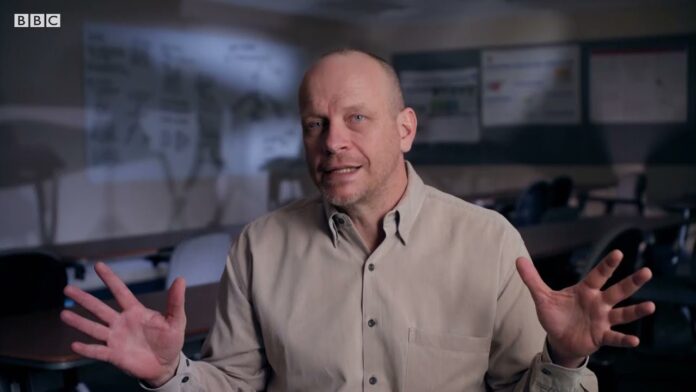In the dynamic world of air travel, United Airlines continues to be a prominent player, navigating through a constantly evolving industry landscape. This comprehensive blog post delves into the current state of United Airlines, exploring its service quality, operational efficiency, the impact of global events, and its future outlook.
Current State of United Airlines
Fleet Composition and Route Network
United Airlines operates a diverse fleet of aircraft, ranging from narrow-body and wide-body jets to regional turboprops. The airline’s fleet composition is strategically aligned to serve its extensive route network, which spans domestic and international destinations across North America, Europe, Asia, and beyond. United’s fleet and network flexibility allow it to adapt to changing market demands and optimize operational efficiency.
Table: United Airlines Fleet Composition
| Aircraft Type | Number in Fleet |
|---|---|
| Boeing 737 | 371 |
| Boeing 767 | 35 |
| Boeing 777 | 55 |
| Boeing 787 | 68 |
| Airbus A319 | 50 |
| Airbus A320 | 126 |
| Embraer ERJ-145 | 128 |
United’s route network is designed to cater to the diverse travel needs of its passengers, offering direct and connecting flights from its major hubs in Chicago, Denver, Houston, Los Angeles, New York/Newark, San Francisco, and Washington, D.C. The airline’s extensive network and strategic partnerships with other carriers allow it to provide seamless connectivity and global reach for its customers.
Financial Performance and Profitability
United Airlines has experienced a mixed financial performance in recent years, navigating through various industry challenges and global events. While the airline has faced headwinds, such as increased fuel costs and the COVID-19 pandemic’s impact on air travel demand, it has also demonstrated resilience and adaptability in its financial strategies.
- In 2019, United reported a revenue of $43.3 billion and a net income of $3 billion, showcasing a strong financial position before the pandemic.
- The COVID-19 pandemic significantly impacted the airline’s financial performance, leading to a net loss of $7.1 billion in 2020.
- To mitigate the financial impact, United implemented cost-cutting measures, including workforce reductions, fleet adjustments, and operational optimizations.
- Despite the challenges, the airline has continued to invest in strategic initiatives, such as fleet modernization, product enhancements, and digital transformation, to position itself for long-term success.
United’s focus on cost control, revenue diversification, and strategic investments has been crucial in navigating the industry’s turbulent landscape and maintaining its competitiveness.
Environmental Sustainability and Corporate Social Responsibility
As a leading global airline, United Airlines has recognized the importance of environmental sustainability and corporate social responsibility (CSR) in its operations. The airline has implemented various initiatives to reduce its environmental footprint and contribute to sustainable air travel.
- Fuel Efficiency and Emissions Reduction: United has set ambitious goals to reduce its greenhouse gas emissions, including a commitment to achieve net-zero emissions by 2050. The airline has invested in fuel-efficient aircraft, implemented fuel-saving operational practices, and explored sustainable aviation fuel (SAF) options.
- Waste Management and Recycling: United has implemented comprehensive waste management and recycling programs across its operations, focusing on reducing single-use plastics, increasing recycling rates, and diverting waste from landfills.
- Charitable Initiatives and Community Engagement: The airline actively supports various charitable organizations and community initiatives, focusing on areas such as disaster relief, education, and environmental conservation. United’s employees are also encouraged to volunteer and contribute to these efforts.
- Diversity, Equity, and Inclusion: United has made strides in promoting diversity, equity, and inclusion within the organization, with a focus on employee development, supplier diversity, and inclusive marketing and customer service.
United’s commitment to environmental sustainability and CSR demonstrates its leadership in the industry and its dedication to creating positive impact beyond just financial performance.
Service Quality and Customer Satisfaction

Onboard Experience and Amenities
The onboard experience is a crucial aspect of air travel, and United Airlines has continually focused on enhancing its offerings to meet the evolving needs and expectations of its passengers.
- Cabin Configurations and Seating: United offers a variety of cabin classes, including First Class, Business Class, Premium Economy, and Economy, each with its own set of amenities and services. The airline has invested in upgrading its seating options, providing enhanced comfort, legroom, and personal space for passengers.
- In-Flight Entertainment and Connectivity: United’s aircraft are equipped with state-of-the-art in-flight entertainment systems, offering a wide selection of movies, TV shows, music, and games. The airline also provides high-speed Wi-Fi connectivity, allowing passengers to stay connected during their travels.
- Dining and Catering: United’s in-flight dining experience has undergone significant improvements, with a focus on offering fresh, high-quality meals and snacks. The airline collaborates with renowned chefs and culinary partners to curate its menu offerings, catering to diverse dietary preferences and special requests.
- Customer Service and Assistance: United’s team of dedicated flight attendants and ground crew provide attentive and personalized customer service, ensuring passengers’ needs are addressed throughout their journey. The airline also offers various assistance programs, such as special accommodations for passengers with disabilities or special needs.
By continuously enhancing its onboard experience and amenities, United Airlines aims to foster a more enjoyable and memorable travel experience for its passengers.
Loyalty Programs and Frequent Flyer Benefits
United’s loyalty program, MileagePlus, plays a crucial role in building long-term relationships with its customers and rewarding their continued loyalty.
- MileagePlus Program Structure: The MileagePlus program offers various tiers, including Premier Silver, Gold, Platinum, and 1K, each with its own set of benefits and privileges. Customers can earn and redeem miles for flights, upgrades, and a wide range of travel-related rewards.
- Elite Status and Benefits: MileagePlus elite members enjoy enhanced benefits, such as priority boarding, complimentary upgrades, lounge access, increased baggage allowances, and dedicated customer service support. These benefits provide a more seamless and exclusive travel experience for loyal United customers.
- Partner Airlines and Earning Opportunities: Through United’s extensive network of airline partnerships, MileagePlus members can earn and redeem miles on a global scale, providing greater flexibility and opportunities to maximize their travel rewards.
- Digital Enhancements and Personalization: United has invested in enhancing the MileagePlus program’s digital experience, offering a user-friendly mobile app and online portal. This allows members to conveniently manage their accounts, track their progress, and access personalized offers and promotions.
By continuously improving its loyalty program and offering valuable benefits to its most loyal customers, United Airlines aims to foster stronger relationships and encourage repeat business.
Customer Feedback and Complaint Resolution
United Airlines places a strong emphasis on customer feedback and strives to address customer concerns in a timely and effective manner.
- Feedback Channels and Monitoring: The airline has established various channels for customers to provide feedback, including online surveys, social media platforms, and dedicated customer service hotlines. United’s customer service teams closely monitor and analyze this feedback to identify areas for improvement.
- Complaint Resolution Process: When customers encounter issues or have concerns, United has a structured complaint resolution process in place. The airline’s customer service representatives work diligently to understand the problem, provide solutions, and ensure a satisfactory outcome for the customer.
- Compensation and Remedies: Depending on the nature of the complaint and the severity of the issue, United may offer compensation or remedies to its customers. This can include refunds, flight credits, or additional miles/rewards to address the customer’s concerns and maintain their trust in the airline.
- Continuous Improvement: United actively seeks to learn from customer feedback and implement changes to enhance the overall travel experience. The airline’s commitment to addressing customer concerns and continuously improving its services is crucial in maintaining a positive brand reputation and fostering customer loyalty.
By prioritizing customer feedback and effectively resolving complaints, United Airlines aims to build trust, improve customer satisfaction, and enhance its overall service quality.
Operational Efficiency and Innovations

Flight Operations and On-Time Performance
Operational efficiency is a critical aspect of the airline industry, and United Airlines has implemented various strategies to optimize its flight operations and improve on-time performance.
- Flight Scheduling and Network Optimization: United’s flight scheduling and network planning teams work diligently to develop an efficient and reliable schedule that meets customer demand while minimizing operational disruptions. The airline leverages data analytics and advanced algorithms to optimize its route network and flight schedules.
- Air Traffic Management and Coordination: United collaborates with air traffic control authorities, airport operators, and industry partners to streamline air traffic management processes. This includes optimizing takeoff and landing procedures, utilizing airspace efficiently, and minimizing delays caused by weather or other external factors.
- Maintenance and Engineering: United’s robust maintenance and engineering programs ensure the airworthiness and reliability of its aircraft fleet. Proactive maintenance, predictive analytics, and innovative engineering solutions help minimize unplanned maintenance events and maximize aircraft availability.
- Crew Management and Scheduling: The airline’s crew management systems and scheduling practices are designed to ensure that qualified and well-rested crews are available to operate flights, contributing to on-time departures and arrivals.
By focusing on operational efficiency, United Airlines aims to provide a reliable and punctual travel experience for its customers, while also enhancing its overall operational performance and cost-effectiveness.
Technological Innovations and Digital Transformation
United Airlines has embraced technological innovations and digital transformation to enhance its customer experience, improve operational efficiency, and drive long-term success.
- Digitalization of Customer Touchpoints: United has invested heavily in developing user-friendly digital platforms, including its mobile app and website, to streamline the booking process, facilitate check-in and baggage handling, and provide real-time flight information and updates.
- Artificial Intelligence and Machine Learning: The airline leverages advanced analytics, artificial intelligence, and machine learning to optimize various aspects of its operations, such as demand forecasting, crew scheduling, and predictive maintenance. These technologies enable United to make data-driven decisions and improve overall operational efficiency.
- Contactless and Touchless Technologies: In response to the COVID-19 pandemic, United has accelerated the adoption of contactless and touchless technologies throughout the customer journey, such as biometric screening, self-service kiosks, and touchless in-flight entertainment systems.
- Sustainability and Carbon Reduction: United is at the forefront of adopting innovative technologies to support its sustainability initiatives. This includes exploring sustainable aviation fuels, investing in fuel-efficient aircraft, and leveraging data analytics to optimize fuel consumption and reduce carbon emissions.
By embracing technological innovations and digital transformation, United Airlines aims to enhance the customer experience, improve operational resilience, and contribute to a more sustainable future for the aviation industry.
Employee Development and Collaboration
United Airlines recognizes that its employees are the backbone of the organization and plays a crucial role in delivering exceptional service and operational excellence.
- Training and Development Programs: The airline invests heavily in comprehensive training and development programs for its employees, equipping them with the necessary skills, knowledge, and tools to excel in their roles. This includes technical training for pilots and maintenance personnel, as well as customer service and leadership development for frontline and managerial staff.
- Employee Engagement and Empowerment: United fosters a culture of employee engagement and empowerment, encouraging its workforce to contribute ideas, provide feedback, and participate in decision-making processes. This collaborative approach helps cultivate a sense of ownership and pride among employees, leading to improved morale and job satisfaction.
- Diversity, Equity, and Inclusion Initiatives: United is committed to promoting diversity, equity, and inclusion within its workforce. The airline has implemented various programs and initiatives to attract, develop, and retain a diverse talent pool, reflecting the diversity of the communities it serves.
- Collaboration and Cross-Functional Integration: United emphasizes cross-functional collaboration and integration across its various departments, from operations and maintenance to customer service and revenue management. This collaboration enables the airline to streamline processes, share knowledge, and drive innovative solutions.
By investing in its employees and fostering a collaborative work environment, United Airlines aims to build a highly skilled, engaged, and adaptable workforce capable of delivering exceptional service and driving the airline’s long-term success.
Impact of Global Events on United Flights
COVID-19 Pandemic and Industry Recovery
The COVID-19 pandemic had a profound impact on the global aviation industry, and United Airlines was no exception. The airline had to navigate through unprecedented challenges and adapt its operations to ensure the safety and well-being of its passengers and employees.
- Passenger Demand Fluctuations: The pandemic resulted in a significant decline in air travel demand, as governments imposed travel restrictions and lockdowns to control the spread of the virus. United responded by adjusting its flight schedules, reducing capacity, and implementing flexible booking policies to accommodate changing customer needs.
- Health and Safety Protocols: United implemented a comprehensive set of health and safety measures to protect its passengers and employees, including mandatory face coverings, enhanced cleaning and disinfection procedures, and the implementation of touchless technologies.
- Financial Implications and Cost-Cutting Measures: The sharp decline in revenue during the pandemic led United to implement various cost-cutting measures, such as workforce reductions, fleet adjustments, and the suspension of non-essential investments. The airline also sought government aid and leveraged financial instruments to maintain liquidity and stability.
- Recovery Strategies and Outlook: As the global vaccination rollout progressed and travel restrictions eased, United has been gradually restoring its flight schedule and network. The airline is focusing on rebuilding passenger confidence, enhancing its product offerings, and capitalizing on the anticipated pent-up demand for air travel in the post-pandemic era.
United’s ability to adapt and pivot its operations during the COVID-19 pandemic has been crucial in navigating the industry’s challenges and positioning the airline for a strong recovery.
Geopolitical Tensions and Operational Disruptions
Geopolitical tensions and global events can have significant impacts on airline operations, and United Airlines has had to navigate through various scenarios that have affected its flight routes and schedules.
- Airspace Restrictions and Rerouting: Heightened geopolitical tensions in certain regions have led to airspace restrictions, requiring airlines like United to reroute flights and adjust their schedules accordingly. This can result in longer flight times, increased fuel consumption, and operational complexities.
- Sanctions and Trade Disputes: Trade disputes and economic sanctions imposed by governments can disrupt airline operations, particularly if they involve restrictions on travel, aircraft leasing, or fuel supply. United has had to carefully monitor and adapt to such developments to maintain its global connectivity.
- Natural Disasters and Weather Events: Extreme weather conditions, such as hurricanes, winter storms, and volcanic eruptions, can cause significant operational disruptions, leading to flight delays, cancellations, and diversions. United’s robust contingency planning and operational flexibility have been crucial in responding to these natural events.
- Cybersecurity and IT Resilience: As a technology-driven organization, United is also mindful of the potential risks posed by cyber threats, which can disrupt critical systems and cause operational disruptions. The airline has implemented robust cybersecurity measures and disaster recovery plans to enhance its IT resilience.
By anticipating and proactively addressing these global events and operational challenges, United Airlines aims to minimize the impact on its customers, maintain its operational integrity, and preserve its reputation as a reliable air travel provider.
Industry Trends and Competitive Landscape
The airline industry is constantly evolving, and United Airlines must navigate through changing market dynamics, technological advancements, and competitive pressures to maintain its position as a leading global carrier.
- Emergence of Low-Cost Carriers: The rise of low-cost carriers has intensified competition, particularly on domestic and short-haul routes. United has responded by implementing its own low-cost subsidiary, United Express, to remain competitive and cater to price-sensitive customers.
- Consolidation and Alliances: The airline industry has seen a wave of mergers and acquisitions, as well as the formation of global alliances. United’s participation in the Star Alliance network allows it to expand its reach, leverage partner airlines’ hubs and networks, and offer a more comprehensive travel experience for its customers.
- Passenger Preferences and Evolving Demand: Changing passenger preferences, such as the increased demand for personalized experiences, sustainable travel options, and seamless digital interactions, have prompted United to invest in product enhancements, customer-centric innovations, and digital transformation initiatives.
- Environmental Regulations and Sustainability Trends: The growing focus on environmental sustainability in the aviation industry has driven United to prioritize initiatives aimed at reducing its carbon footprint, improving fuel efficiency, and exploring sustainable aviation fuels. These efforts are essential in addressing industry-wide sustainability challenges and meeting regulatory requirements.
By closely monitoring industry trends, adapting to competitive pressures, and anticipating evolving passenger needs, United Airlines aims to maintain its market position, strengthen its brand, and deliver a compelling value proposition to its customers.
Future Outlook and Strategic Plans
As United Airlines looks ahead, the airline has developed a comprehensive strategy to navigate the evolving industry landscape and position itself for long-term success.
Fleet Modernization and Network Optimization
- Fleet Renewal: United plans to continue the modernization of its aircraft fleet, replacing older, less fuel-efficient models with newer, more environmentally friendly and technologically advanced aircraft. This includes the introduction of Boeing 737 MAX and 787 Dreamliner aircraft, which offer improved efficiency and passenger comfort.
- Network Expansion and Optimization: The airline will focus on strategically expanding its route network, leveraging its hubs and partnerships to offer customers more destinations and seamless connections. United will also optimize its existing network, adjusting flight frequencies and capacities to align withchanging demand patterns and market dynamics.
Digital Transformation and Customer Experience
- Enhanced Digital Services: United is investing in digital transformation initiatives to enhance the customer experience, streamline booking processes, and offer personalized services through its online platforms and mobile app. This includes implementing advanced analytics, artificial intelligence, and personalization features to cater to individual preferences.
- Contactless Technology: In response to changing consumer behavior and health concerns, United is accelerating the adoption of contactless technologies throughout the passenger journey, including touchless check-in kiosks, self-service bag drops, and biometric authentication for seamless travel experiences.
- Customer Feedback and Engagement: The airline is actively gathering feedback from customers through surveys, social media channels, and other touchpoints to understand their preferences, expectations, and pain points. United uses this data to drive continuous improvement initiatives and deliver customized solutions that meet customer needs.
Sustainability Initiatives and Environmental Innovation
- Carbon Emissions Reduction: United is committed to reducing its carbon emissions and environmental impact through various initiatives, such as investments in fuel-efficient aircraft, operational efficiency improvements, and collaborations with industry partners to explore sustainable aviation fuels and carbon offset programs.
- Sustainable Operations: The airline is focusing on sustainable operations practices, including waste reduction, recycling programs, and energy-efficient facilities to minimize its environmental footprint. United is also pursuing environmentally friendly initiatives in its supply chain and ground operations to promote sustainability across its ecosystem.
- Community Engagement and Social Responsibility: United is actively engaging with local communities, environmental organizations, and stakeholders to promote environmental stewardship, support conservation projects, and contribute to sustainable development initiatives around the world. The airline recognizes the importance of corporate social responsibility in building trust and goodwill with its stakeholders.
By aligning its strategic plans with these future-oriented initiatives, United Airlines aims to reinforce its commitment to sustainability, innovation, and customer-centricity, while navigating the challenges and opportunities in the dynamic aviation industry landscape.
Conclusion
United Airlines has demonstrated resilience, adaptability, and innovation in navigating through a series of global events, industry trends, and operational challenges. Despite the disruptions caused by the COVID-19 pandemic, geopolitical tensions, and competitive pressures, the airline has remained focused on enhancing service quality, optimizing operational efficiency, and prioritizing customer satisfaction.
Looking ahead, United’s future outlook remains promising, with strategic plans in place to drive fleet modernization, network optimization, digital transformation, sustainability initiatives, and customer experience enhancements. By leveraging its strengths, partnerships, and innovative mindset, United Airlines is well-positioned to thrive in the evolving aviation landscape and continue delivering value to its passengers in the years to come.









